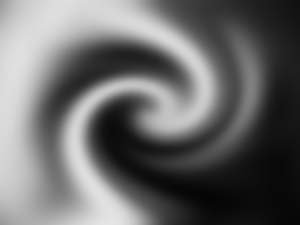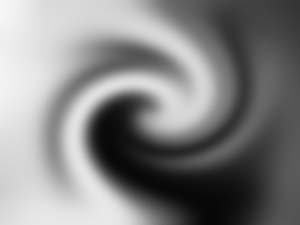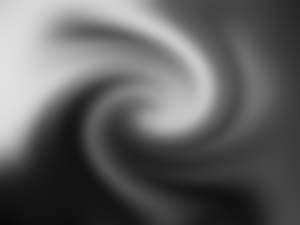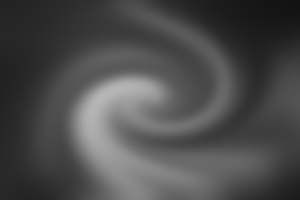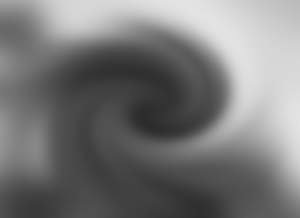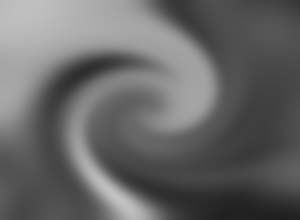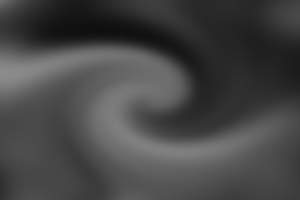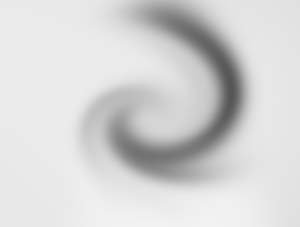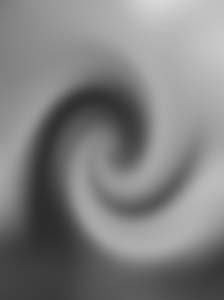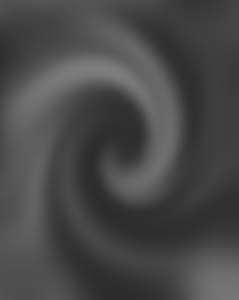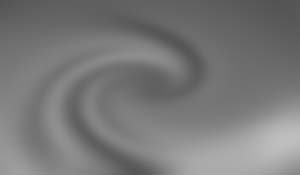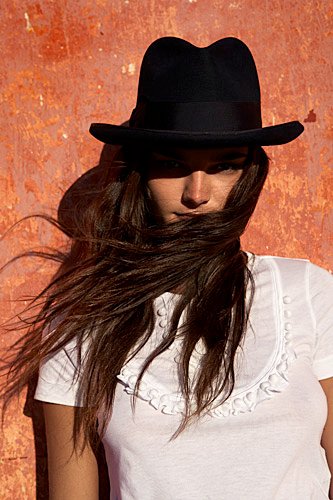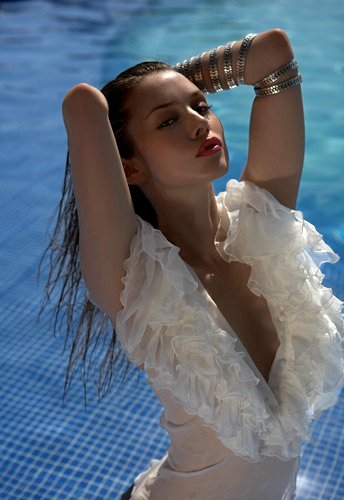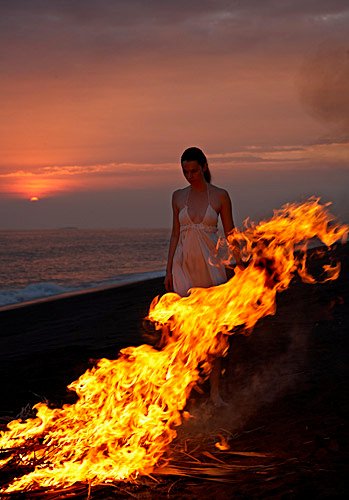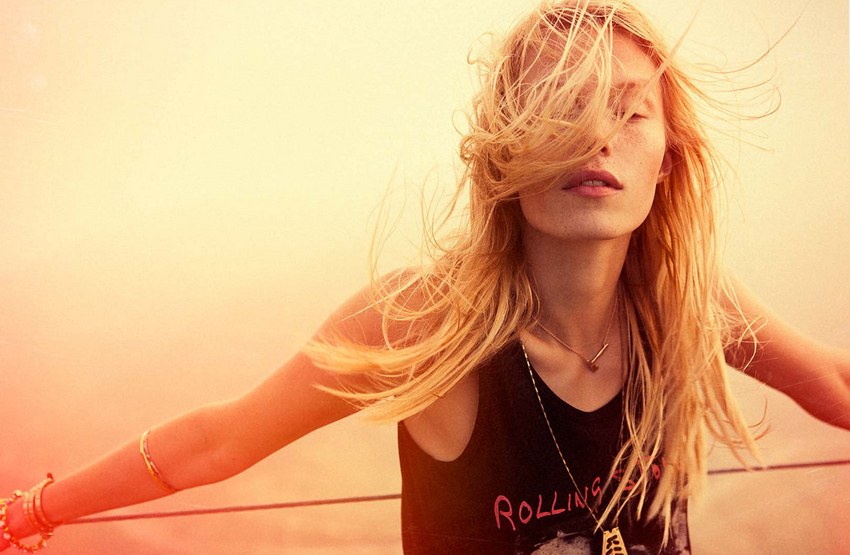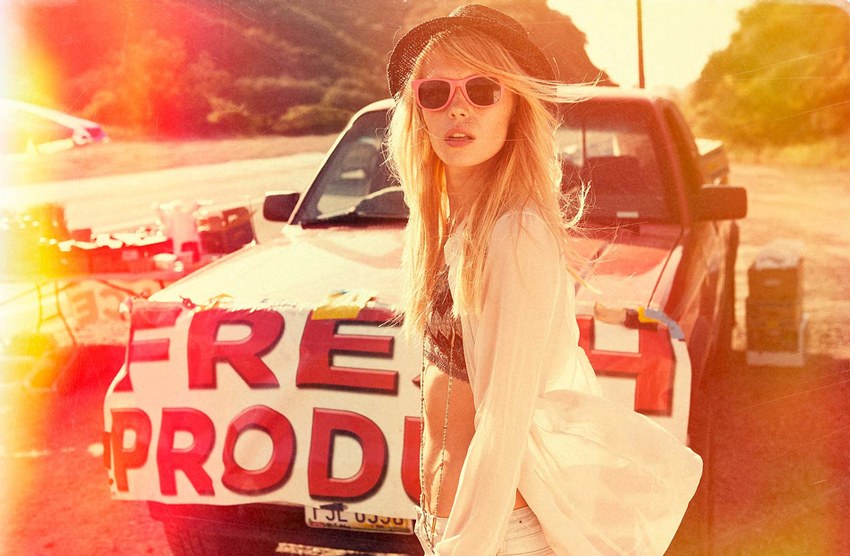
Cameras and lenses aside (see our separate sections on Cameras and Lenses) there are a number of other items that should be part of all wedding photographers’ war chests. Having these items on hand and knowing how to use them can make the difference between a great wedding album and one that’s mundane.
Tripods
It is essential to have a sturdy tripod at your disposal when you are photographing a wedding, for situations in low light, or when you have to compose formal group shots. If you place a remote-triggered camera in the chapel balcony, you’ll need to mount it on a tripod, or perhaps use a Super clamp or similarly adjustable clamp, with 1/4″-20 or 3/8″-16 camera threads. It’s a great idea to have a small tabletop tripod with you as well, which can help you steady a shot atop a table or other horizontal surface. One of these can also help when you need to brace the camera vertically against a wall or other architectural element to obtain images free of the blur associated with operator movement.

For more information about choosing a tripod, please refer to our Tripod and Tripod Heads Buying Guide.
Flash Meters
For ambient light readings, the meter in your camera can be quite sufficient. Flash metering is another story, especially if you are using flash to fill backlit subjects or darken background areas to place more emphasis on the subjects in the foreground. You can always shoot test exposures and review them on your camera’s LCD, but a more professional and certainly more precise method of establishing accurate flash exposures is by using a flash  meter.
meter.
One consistent characteristic of flash meters is that even the least expensive of them can establish both ambient and flash exposures—reflective or incident—down to 1/10-stop in accuracy, wirelessly or tethered. When you are dealing with the broad contrast range presented by men’s and women’s wedding clothes, it is important to consider the benefits of taking incident readings with a handheld light meter. Incident readings measure the amount of light falling on the subject, rather than the amount of light reflected from the subject. In most cases, incident readings, which read the light in terms of neutral, 18% gray values, will provide you with accurate average exposures regardless of whether your subjects are wearing white gowns, black tuxedos or brightly colored bridesmaid dresses.
Sekonic goes one step further by offering the option of incorporating PocketWizard wireless triggers into many of their flash meters, which enables you to “walk the set” in order to establish flash and ambient exposure readings from any position within the frame. At B&H, we stock a variety of flash meters from companies including Sekonic, Gossen, Shepherd/Polaris, Interfit, Wein and Kenko.
Wireless Remote Triggers
When it comes to taking pictures in crowded environments, the fewer cables you have strewn about the floor, the better. Every cable you can eliminate is one less worry about a guest tripping and falling. Wireless remotes can be used to trigger your main and fill flashes and your cameras. Many wireless remotes feature multiple channels or frequencies, which is a valuable feature if you’re shooting in close proximity to other photographers using wireless triggers or when you need to trigger different groups of your own lights. By coordinating channel selections, everybody can perform their duties without interfering with the other photographers’ agenda.
For shooting in “photographer-rich” environments such as catering halls hosting simultaneous weddings, each with its own photographer—or such as when you and your assistant are capturing alternate views of the same wedding with two cameras—the PocketWizard MultiMax offers a choice of 32 channels, while the Pearstone Wireless Shutterboss Remote Timer offers 99 channels. You can also use the multiple-channel feature to trigger multiple sets of electronic flash units independently from each other, which is particularly handy when those setups are being used simultaneously. Available individually or in sets, radio transmitters, receivers and transceivers are available from PocketWizard, Quantum and Elinchrom. Keep in mind that a remote trigger can become almost as useful as an assistant when used to trigger a tripod-mounted remote camera with a wide-angle lens in the church balcony, for example, capturing the aerial views of the ceremony.
In addition to the radio-slave offering from Elinchrom, Quantum and Pocket Wizard, we also stock the Impact PowerSync 16 DC Radio Slave System, a very affordable battery-powered (AC optional) wireless trigger system that offers a choice of 16 channels and a range of up to 590′ (180 m) indoors and up to 200′ (60 m) outdoors.
Dedicated and generic wireless camera triggers are also available from Hahnel and Dot Line, and many of these remotes are also available in multi-channel models. Dedicated wired and wireless remote controls are also available from Nikon and Canon.
Battery Grips
Battery grips are advantageous for several reasons, but are primarily valuable because they sport secondary shutter release buttons and command dials, which make it ergonomically easier to orient your camera vertically. Battery grips also add an extra measure of grip-ability, which is an especially welcome feature for ensuring a positive hold on your camera. Because battery grips hold dual batteries, you can expect to make twice as many exposures before having to replace your camera’s batteries. Depending on the make and model, many battery grips also offer the option of powering with standard AA batteries, which can prove to be a lifesaver when the party is still raging on and all your rechargeable batteries are spent. Vello offers a range of battery grips to suit a number of popular DSLRs, such as the Canon 5D Mark II and 7D, as well as Nikon’s D7000 and D5100.
grips are advantageous for several reasons, but are primarily valuable because they sport secondary shutter release buttons and command dials, which make it ergonomically easier to orient your camera vertically. Battery grips also add an extra measure of grip-ability, which is an especially welcome feature for ensuring a positive hold on your camera. Because battery grips hold dual batteries, you can expect to make twice as many exposures before having to replace your camera’s batteries. Depending on the make and model, many battery grips also offer the option of powering with standard AA batteries, which can prove to be a lifesaver when the party is still raging on and all your rechargeable batteries are spent. Vello offers a range of battery grips to suit a number of popular DSLRs, such as the Canon 5D Mark II and 7D, as well as Nikon’s D7000 and D5100.
Filters
Even though the White Balance controls are built into every digital camera, not to mention the fact that the post capture color-correction tools found in almost every photo editing program have reduced the need for color compensating (CC) filters, there are some filters that simply cannot be dialed in from the comfort of your camera’s menu selections. Included among these filters are Polarizing, UV (ultraviolet reduction), Neutral Density (solid, graduated, or center ND) and diffusion filters.
Polarizing filters, which in terms of wedding photography are primarily used for outdoor scenes, are designed to eliminate glare, reflections in polished surfaces, glass and water and make clouds pop from darkened blue skies. They are great to use if your wedding party is posed beside a body of water or a glass-walled urban structrue. To eliminate stray light from striking your lens, always use a lens hood. Do take care when using a polarizing filter on a wide-angle lens; the amount of polarizing effect is directly influenced by the lens’s angle to the sun, and this combination of lens and filter can cause your sky to vary unnaturally from light to almost navy blue.

UV filters serve their purpose both indoors and out. Indoors, UV filters temper the degree of UV radiation that might be generated by your electronic flash tubes. Though invisible to the human eye, UV can leave a bluish cast in your images under certain types of lighting. Regardless of whether you are shooting indoors or out, using UV filters is an effective way to protect the front element of your lens. Another option for protecting the front elements of your lenses is to use clear protection filters such as the Hoya Clear Pro 1 Digital Multi-coated filters and Nikon’s NC Glass filters. There are a number of electronic filters on the market that allow you to layer filter effects to your photographs, post capture, and many of them work quite well. The exception are software-generated Polarizing filters, which only serve to saturate color, but cannot remove reflections and glare, which can only be achieved at the time of capture.
Regardless of whether you are shooting indoors or out, using UV filters is an effective way to protect the front element of your lens. Another option for protecting the front elements of your lenses is to use clear protection filters such as the Hoya Clear Pro 1 Digital Multi-coated filters and Nikon’s NC Glass filters. There are a number of electronic filters on the market that allow you to layer filter effects to your photographs, post capture, and many of them work quite well. The exception are software-generated Polarizing filters, which only serve to saturate color, but cannot remove reflections and glare, which can only be achieved at the time of capture.
Neutral density (ND) filters are essentially neutrally tinted filters that enable you to reduce the amount of light entering your lens so you can alter your shutter or aperture settings in the same light. ND filters come in handy when you need to reduce the output of your lighting system beyond its existing low-power setting. ND filters are also an easy solution for shooting at wider apertures in bright light in order to take advantage of selective-focus effects.
ND filters can be handy for adding suggestions of movement in an otherwise static photograph. As an example, with a 3- or 4-stop ND filter in place, you can pose the newlyweds in front of a waterfall and turn the waterfall into a creamy blur by slowing your shutter speed, while the couple holds stock still and remains tack sharp. This technique can be used with any moving background or foreground, with striking results. This is also a handy way to eliminate otherwise distracting moving elements in a picture.
In addition to standard ND filters, Variable ND filters are also available, which allow you to change the degree of neutral density by 2-8 stops, simply by rotating the outer ring of the filter. This can be a huge time saver while shooting under the gun.
Diffusion filters should be part of every portrait and wedding photographer’s outfit. Designed to soften the skin tones and create a dreamy haze, diffusion filters are available in numerous degrees of textures and patterns, which can flatter the complexions of people who don’t resemble the high-fashion models we’re used to seeing on magazine covers. If you want to soften facial features, smooth lines and wrinkles without the dreamy haze-like effect, try a soft-focus filter. These are especially flattering for portraits. When using diffusion and soft-focus filters, it’s always a good idea to go easy on the amount of softening you employ, as too much diffusion can be as distracting as none at all. So be judicious. Tread softly.

Tiffen FX-series diffusion filters are available in a number of configurations including “black diffusion” filters, which soften the image without reducing the overall contrast levels of the photograph. Many Tiffen FX-series filters are also available in a choice of warm-tone and neutral tone.
Filters are available in a range of quality levels, and with the possible exception of diffusion filters, you should always use higher-quality filters on your lenses in order to maintain the sharpness levels of the lenses you paid hard-earned money for the pleasure of owning and using.
Batteries
When it comes to photography—especially digital photography—batteries make the world go round, and when you run out of juice, your world basically comes to a halt. This is not a good thing when you’re out on a job, wedding or otherwise. For this reason it’s obligatory that you have, at the very least, a complete set of back-up batteries for every item in your bag that uses batteries.
Although most cameras are powered by dedicated lithium-ion rechargeable batteries, accessories such as flashguns, transceivers, etc., still rely on AA, AAA, 9V, C, D and any number of button-type batteries. At the very least, you should always carry a minimum of one spare set of batteries for each of your battery-powered devices.
At B&H we stock an extensive assortment of dedicated rechargeable camera batteries for most popular cameras and dedicated flashguns. If your batteries are rechargeable, make sure the chargers are also packed and readily accessible. An appealing option for efficient charging is Pearstone’s Duo Battery Charger, which allows you to charge two batteries at a time and mix and match types or brands of batteries.
Easy access to AC power outlets is another big concern, and to ensure you’re never caught short, it’s highly recommended that you carry at least one AC extension power cord for each AC-powered device you will be using during the course of the day. Though available in a number of colors and lengths, it makes the most sense to stick to 25′ or 50′ lengths, many of which are available with triple outlets that enable you to tap up to three packs or devices into each cord.
Depending on your gear and the state of the electrical system you will be working with, it’s not a bad idea to include a few surge protectors, which are available in a number of configurations, as well as a few multi-voltage adapters/converters if your plans include shooting across international borders.
Gaffer Tape
Sometimes a simple strip of gaffer tape can make the difference between a minor hiccup and a total disaster. Available in a number of widths (3″, 2″, 1″ and ½”) and colors (black, white, gray, red, yellow, blue, fluorescent green, fluorescent orange, fluorescent pink, fluorescent yellow), gaffer tape can be used for taping cables securely along the floor, quick repairs of gear, securing cases for shipping and any number of other uses. Gaffer tape in colors can also be used to identify your gear quickly in terms of where it goes when packing up, or in the case of shooting with multi-channel lighting systems, color-coding individual channels and related gear for syncing purposes. Gaffer tape is a thinking photographer’s solution.

As we mentioned in the section above on wireless triggers, even though we live in an increasingly wireless universe, we still have to deal with cables. To ensure that nobody trips over them, we suggest that in addition to gaffer tape, you include a few rolls of Permacel/Shurtape Cable Path Gaffer Tape in your kit. Available in 4″ and 6″ widths (x 30 yards), this extra-wide yellow gaffer tape features a glue-free center channel that allows you to secure long runs of lighting and sound cables to the floor, without the hassle of wrestling the tape from the cables when you’re finished for the day.
A reusable alternative to taping cables to carpeted surfaces is the Safcord Cord & Cable Protector, which is available in a choice of 3″ x 6′ and 4″ x 30′. Made of industrial-grade Cordura Nylon, Safcord Cord & Cable Protectors use hook-and-loop touch fastener material instead of adhesive to securely hold cords and cables to carpeted surfaces. When you’re finished, all you have to do is pull the strips from the floor, roll them up and tuck them away until your next gig.
Memory Cards
You can never have enough of them, and the faster the read/write speed, the better. Hi-speed memory cards keep shrinking in price while growing in capacity. If the read/write speeds of the newest cards are faster than the read/write speed of your current camera, this only means it will be an ideal match for your next camera, which will undoubtedly outstrip the camera you currently own in terms of processing speed.  The same school of thought goes for the storage capacities of your memory cards. Today’s cameras capture larger file sizes—and sometimes multiple files simultaneously—not to mention video, which eats up memory like there’s no tomorrow. So when contemplating your next card, remember it wasn’t all that long ago a 1GB card was a big deal. Make sure to use cards with as much memory as is compatible with your camera. If you are going to capture large RAW files and “process” them in some sort of post-production software such as Photoshop or Lightroom, it might be wise to research cameras that sport dual card slots and the ability to write to both cards, for backup.
The same school of thought goes for the storage capacities of your memory cards. Today’s cameras capture larger file sizes—and sometimes multiple files simultaneously—not to mention video, which eats up memory like there’s no tomorrow. So when contemplating your next card, remember it wasn’t all that long ago a 1GB card was a big deal. Make sure to use cards with as much memory as is compatible with your camera. If you are going to capture large RAW files and “process” them in some sort of post-production software such as Photoshop or Lightroom, it might be wise to research cameras that sport dual card slots and the ability to write to both cards, for backup.
With the exception of portraits, capturing rapid action photo sequences without missing a beat requires using cards that can process large image files as fast—or faster—than your camera can capture them. Some of the fastest CF cards we currently stock at B&H include SanDisk’s Extreme Pro-series CF memory cards and Lexar’s 400x and 600x Professional-series CompactFlash cards. For cameras using SD series memory cards, the fastest of the lot currently include Lexar’s Professional SDHC/XC memory cards and SanDisk’s Extreme Pro SDHC and SDXC memory cards.
JPEGs are fine for snapshots, but if you are going to present a finished portfolio of images with as much color, dynamic range and detail as possible, you’ll want to shoot and process RAW files, which take up a great deal more space and beg for larger-capacity memory cards. JPEGs, which don’t contain as much visual information, take up less space but leave off where RAW files begin, quality-wise.
Storage Devices
With the speed and storage capacities of memory cards steadily increasing, incessant card-swapping and data backup may not be as critical as it was not too long ago. It’s comforting to know your back is covered if anything should happen to your cards during or after the ceremony and reception.  Once you fill your memory cards, you have to do something with the image files each one contains before you reformat a card and pop it back into your camera. For storing these image files you have several viable options, some of which require the use of a laptop, netbook or tablet containing a built-in card reader that’s compatible with the card format you are using (i.e. SD, CF, Memory Stick, etc.). You can also use a USB or FireWire port for attaching a storage drive or a receiver. You can even transmit image files to your drive or laptop wirelessly.
Once you fill your memory cards, you have to do something with the image files each one contains before you reformat a card and pop it back into your camera. For storing these image files you have several viable options, some of which require the use of a laptop, netbook or tablet containing a built-in card reader that’s compatible with the card format you are using (i.e. SD, CF, Memory Stick, etc.). You can also use a USB or FireWire port for attaching a storage drive or a receiver. You can even transmit image files to your drive or laptop wirelessly.
If you’d rather bypass a laptop, netbook, or tablet, there are also stock portable hard drives available with built-in card readers and LCD screens for reviewing your pictures, from companies including Wolverine, Digital Foci and Jobo.
USB and FireWire-enabled portable storage drives, which currently sell for as little as (or under) $100 for 1 terabyte of storage space, are quick and easy solutions for backing up or archiving images. Your files can also be stored temporarily on your laptop, netbook or tablet’s hard drive.
One company that’s been gaining attention in the world of on-the-fly data storage is Nexto DI, which manufactures a nice selection of high-performance portable storage drives in capacities of up to 750GB, many of which contain LCD screens for reviewing and editing image files downloaded from your memory cards. Depending on the model, Nexto DI storage devices are shock and drop resistant, can transfer data to other devices and burn data to Blu-ray Discs, recover bad sectors and support a number of memory-card formats including Panasonic P2/P2E cards, UDF and FAT32 memory cards.
If you think you are going to be really piling up the megabytes as you photograph the wedding, and your cameras of choice include certain Canon DSLRs, you also have the option of using Canon Wireless File Transfer transmitters, which enable you to upload image files to a notebook computer for backup and extra storage space, as you shoot. And if you’re shooting with another brand of camera, don’t forget about Eye-Fi cards, which can transmit your photos to your external hard drive or laptop wirelessly, allowing you to maintain open space on the card. Another option favored by wedding photographers is to upload captured image files to any number of cloud-based servers, which can be edited and made accessible to the clients for their enjoyment even before the festivities have ended.
Posing Stools
Posing stools are worth considering because they are less obtrusive and easier to use for posing purposes than the chairs you’re likely to find at the catering hall or the local VFW. Narrow in profile, swivel-based and adjustable in height, posing stools allow you to pose individuals and couples with a great degree of fluidity and flexibility. Most of these posing stools can be broken down for easy transport. Posing stools are available from Impact, Photogenic, Norman and Delta 1.

Camera Lens/Sensor Cleaning Kits
The truly important guidelines of proper camera user maintenance involve keeping your camera’s lenses, imaging sensor and LCD smudge free, all of which involves checking your gear before, during and after every assignment. Happily, B&H is your source for both cleaning cloths and LCD screen protectors.
Maintaining smudge-free lenses—specifically the front and rear elements—is a relatively effortless affair. To remove incidental dust particles, a camel-hair brush is often sufficient, and assuming the brush is clean, camel-hair brushes don’t leave any residue behind. You can also use an air blower to remove dust particles and grit. Most lens smudges can be easily eliminated by simply breathing on the lens surface and wiping it clean with a microfiber cloth. Repeat the breathe-and-wipe process once or twice if needed, or if the smudges are more tenacious, go the heavier-duty route with a lens-cleaning kit. For more stubborn smudges, a good lens-cleaning kit can be a lifesaver. Apply the lens-cleaning solution to your cloth, not directly to the lens, and wipe in gentle, circular motions—never apply lens-cleaning solution directly to the lens surface. A few drops applied sparingly to a microfiber cloth should be more than sufficient to remove almost anything. Cleaning kits like these are indispensible for ensuring clean lenses and crisp image capture and are available from a number of manufacturers.

For cleaning smudges from the harder-to-reach edges of the lens elements, try applying a few drops of lens-safe cleaning solution to a cotton swab and gently swipe the dirt from its hiding place. Many kits also contain baster-like air blowers, which are also handy for clearing dust off your camera sensor. Never use canned compressed air to clean your sensor!
Even if your camera has a built-in dust-reduction system, inevitably a bit of dust or two will find its way onto your camera’s mirror or imaging sensor. If you see fuzzy dark spots when you peer through your camera’s viewfinder, the villains are on the mirror. These particles can usually be blown away easily by removing the lens and, with the camera pointed face-down, blowing the dust off the mirror’s surface with a few blasts from one of the baster-like air blowers we sell at B&H. Follow up by cleaning the particulate matter from your camera sensor—carefully—with any one of a number of comprehensive sensor-cleaning kits.
If you are going to use sensor-cleaning kits, it is imperative that you read the instructions thoroughly and follow the manufacturer’s recommendations in order to avoid damaging the camera’s imaging sensor. It’s a good idea to clean your gear after every event, followed by a quick check before the next job, because you have better things to do the day of the event. And don’t forget to hold your camera with the sensor pointing at the floor when you’re changing lenses. Dust tends to descend more often than it ascends. You should avoid touching the mirror surface with your fingers, cotton swabs, or anything else at all costs, because unlike the mirrors in which we admire ourselves when nobody’s looking, the mirrors in our cameras are surface-coated and as such can be easily scratched and otherwise permanently damaged. Keep fingers away from the camera sensor, too, which is sensitive to abrasion as well as the grease and oils on your skin.
Often overlooked, but important nonetheless, is cleaning the contacts of your memory cards. Grit and work-a-day greasy stuff can render your memory cards undependable, and when you’re shooting a one-time happening, you don’t want your cards to hang up on you. In order to minimize the chance of compromised data transmission between your camera and memory card, it’s a good idea to clean the card contacts regularly with a  memory card cleaning kit, such as the Kinetronics Memory Card Contact Cleaning Kit.
memory card cleaning kit, such as the Kinetronics Memory Card Contact Cleaning Kit.
Ladders and Stepladders
One of the tricks of grabbing successful photographs at crowded events such as weddings is to rise above the occasion, which is easily accomplished by climbing a few steps up a ladder or stepstool. B&H stocks a number of ladders, both single-sided and double-sided, in 4′, 6′, 8′, 10′ and 12′ heights that enable you to catch imagery you probably couldn’t get standing flat-footed on the floor.
Folding Reflectors
Folding reflectors for bounce lighting, which allow you to fill shadows and perform a variety of lighting effects using ambient or studio light, are invaluable indoors and out. Available in a number of shapes and sizes (circular reflectors 12″ to 60″ and curved, rectangular reflectors measuring 24 x 36″, 36 x 48″, 41 x 74″, 42 x 72″ and 48 x 72″), folding reflectors are configured in a combination of gold/silver, gold/white, silver/white or gold/silver/white. Depending on the tone of the reflector, you can open up shadow details with soft-neutral, contrasty-neutral or warm-toned illumination.
For softening harsher, overhead midday light, try using a translucent diffuser panel (also available in circular and rectangular formats) between the sun and your subjects. Because folding reflectors and diffusers are extremely light and fold down to about a quarter of their full size, they’re easy to pack and transport. Don’t leave home without one… or two!

Reflectors and diffusers can be invaluable lighting tools on the big day, but there’s not always a spare set of hands available to hold them in place. An effective substitute for an assistant is a reflector holder. Available with and without an accompanying light stand, reflector holders are available in a number of designs from close to a dozen manufacturers. Two popular (and quite affordable) models are the Impact Telescopic Collapsible Reflector Holder (holder arm only) and the Impact Multiboom Light Stand/Reflector Holder, which includes a 13′ stand.
Flashlights
Small, pocket-sized flash lights are essential for retrieving small accessories that inevitably find their way into hard-to-find creases in the corners of your camera bag. This is especially true in the bottom of a black bag when the lights are low, which at many weddings, is par for the course. Make sure everyone assisting you has a flashlight tucked away in easy reach. LED flashlights are extremely bright for their size, and drain batteries much more slowly than incandescent lights do.
lights are essential for retrieving small accessories that inevitably find their way into hard-to-find creases in the corners of your camera bag. This is especially true in the bottom of a black bag when the lights are low, which at many weddings, is par for the course. Make sure everyone assisting you has a flashlight tucked away in easy reach. LED flashlights are extremely bright for their size, and drain batteries much more slowly than incandescent lights do.
Leatherman Tool
Stuff happens, and when it does it’s nice to have a tool handy that can help rectify the problem. Because it’s not practical to haul around a wheeled, four-drawer Craftsman tool chest, many on-site glitches can often be remedied with the aid of a Leatherman multitool. Available in a number of configurations, your investment will have paid for itself the first time you need it… and as any seasoned pro can tell you, sooner than later, you’re going to need one.
Two-Way Radios
When it comes to weddings it’s not unusual for two or more important photo ops to occur simultaneously, and often with little or no warning, which makes communicating with assistants extremely important. To make certain that one-time photo ops aren’t missed, it’s a good idea for everyone on the photo team to be issued a two-way radio in order to keep communication flowing, which at wedding speeds is a top priority.

Essential and Incidental
To complete your gear checklist and possibly even save the day, make sure you always pack other items in your bags, such as a sewing kit, a first-aid kit, a notepad and pen, safety pins, straight pins and bobby pins, snacks, water, umbrellas, even hairspray—should a windy day threaten a bride’s hairdo.
What are some of the essential items you pack in your kit? Feel free to let us know in the Comments section below.
 How To Deal With Copyright Infringement Per Zennstrom shares his experience with handling copyright infringement & shows how to deal with intellectual property (IP) infringement in the real world.
How To Deal With Copyright Infringement Per Zennstrom shares his experience with handling copyright infringement & shows how to deal with intellectual property (IP) infringement in the real world. Mastering The Photographic Workflow We share with the readers of FashionPhotographyBlog.com, the processes we go through in our workflow. After revealing our tips for working with agency models, there are two types of workflow that photographers should pay attention to. In this article we will be discussing the photographic workflow process.
Mastering The Photographic Workflow We share with the readers of FashionPhotographyBlog.com, the processes we go through in our workflow. After revealing our tips for working with agency models, there are two types of workflow that photographers should pay attention to. In this article we will be discussing the photographic workflow process.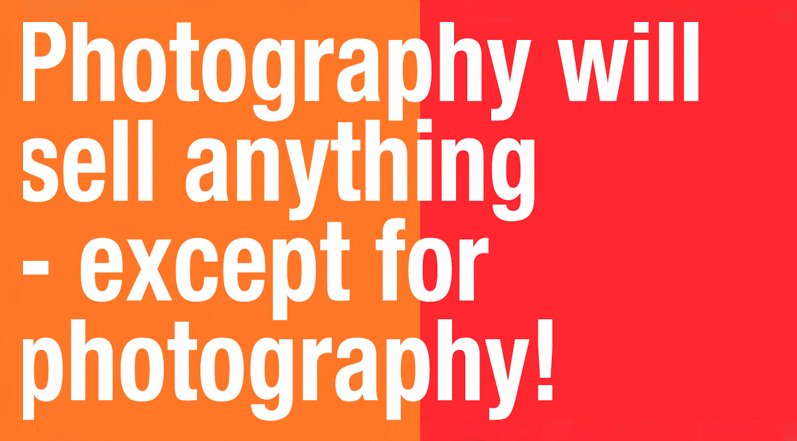 Photography Will Sell Anything Except For Photography In this post, Per shares his thoughts with FashionPhotographyBlog.com about the photography network economy and surviving the changes in the digital age. Let’s get started! Here is Per…
Photography Will Sell Anything Except For Photography In this post, Per shares his thoughts with FashionPhotographyBlog.com about the photography network economy and surviving the changes in the digital age. Let’s get started! Here is Per… 4 Things To Consider Before Starting Your Portfolio By now you all should know how to create some pretty pictures. (If you don’t – tsk tsk, what have you been doing all this time?!
4 Things To Consider Before Starting Your Portfolio By now you all should know how to create some pretty pictures. (If you don’t – tsk tsk, what have you been doing all this time?!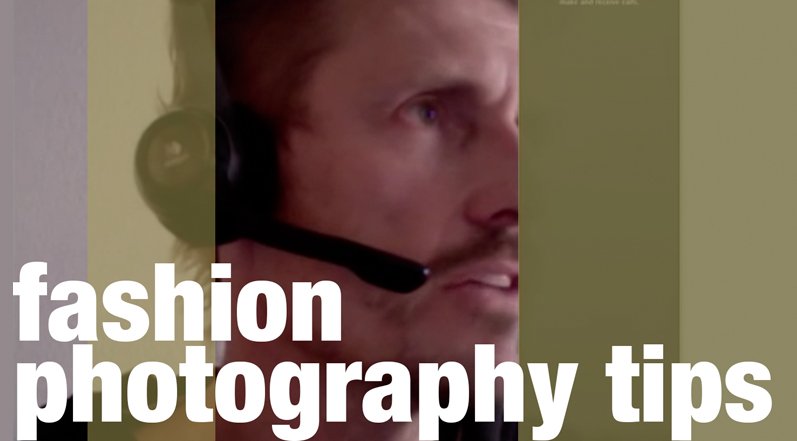 Per Zennstrom’s Fashion Photography Tips Today, we have a video by, Berlin-based fashion photographer, Per Zennstrom on FPBlog. In this video, Berlin fashion photographer, Per Zennstrom shares his experiences as a fashion photographer as well as providing some answers to questions.
Per Zennstrom’s Fashion Photography Tips Today, we have a video by, Berlin-based fashion photographer, Per Zennstrom on FPBlog. In this video, Berlin fashion photographer, Per Zennstrom shares his experiences as a fashion photographer as well as providing some answers to questions.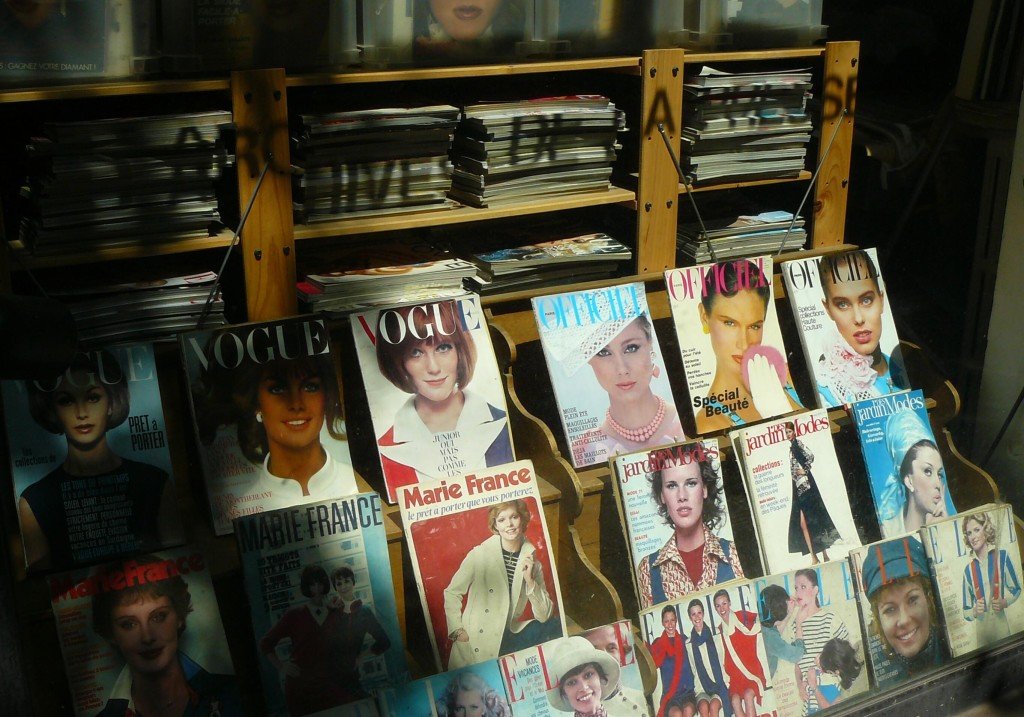 Photography Magazines: Why Print Is Losing To The Internet Hey there FashionPhotographyBlog.com readers. Recently, I received a request from a student fashion journalist on our FPBlog Facebook page asking me to offer opinions to help her out with her latest assignment. The question she posed was “Why online is overtaking print as the medium for hobby and trade magazines?” and more specifically those around the photography field.
Photography Magazines: Why Print Is Losing To The Internet Hey there FashionPhotographyBlog.com readers. Recently, I received a request from a student fashion journalist on our FPBlog Facebook page asking me to offer opinions to help her out with her latest assignment. The question she posed was “Why online is overtaking print as the medium for hobby and trade magazines?” and more specifically those around the photography field.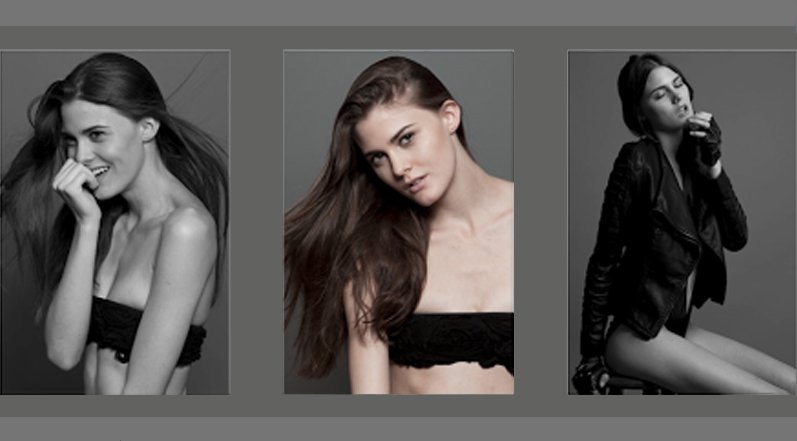 Mastering The Digital Workflow We share with the readers of FashionPhotographyBlog.com, the processes we go through in our workflow. After revealing tips for the photographic workflow, there are two types of workflow that photographers should pay attention to. In this article we’ll be discussing the other half of the equation, that is, the digital workflow process.
Mastering The Digital Workflow We share with the readers of FashionPhotographyBlog.com, the processes we go through in our workflow. After revealing tips for the photographic workflow, there are two types of workflow that photographers should pay attention to. In this article we’ll be discussing the other half of the equation, that is, the digital workflow process. The 1920s Shoot With Celeste Van Rooyen FashionPhotographyBlog.com caught up with Photo of the Week winner, Celeste van Rooyen. Celeste originates from Cape Town, South Africa but had lived in London for 3 years, then studied wine making in Stellenbosch, South Africa and worked in the wine industry before moving to Dubai where she is now based. Her work has also been printed in OK, Shape &…
The 1920s Shoot With Celeste Van Rooyen FashionPhotographyBlog.com caught up with Photo of the Week winner, Celeste van Rooyen. Celeste originates from Cape Town, South Africa but had lived in London for 3 years, then studied wine making in Stellenbosch, South Africa and worked in the wine industry before moving to Dubai where she is now based. Her work has also been printed in OK, Shape &…










 meter
meter
 grips
grips
 Regardless of whether you are shooting indoors or out, using
Regardless of whether you are shooting indoors or out, using 


 The same school of thought goes for the storage capacities of your memory cards. Today’s cameras capture larger file sizes—and sometimes multiple files simultaneously—not to mention video, which eats up memory like there’s no tomorrow. So when contemplating your next card, remember it wasn’t all that long ago a 1GB card was a big deal. Make sure to use cards with as much memory as is compatible with your camera. If you are going to capture large RAW files and “process” them in some sort of post-production software such as
The same school of thought goes for the storage capacities of your memory cards. Today’s cameras capture larger file sizes—and sometimes multiple files simultaneously—not to mention video, which eats up memory like there’s no tomorrow. So when contemplating your next card, remember it wasn’t all that long ago a 1GB card was a big deal. Make sure to use cards with as much memory as is compatible with your camera. If you are going to capture large RAW files and “process” them in some sort of post-production software such as  Once you fill your memory cards, you have to do something with the image files each one contains before you reformat a card and pop it back into your camera. For storing these image files you have several viable options, some of which require the use of a laptop, netbook or tablet containing a built-in card reader that’s compatible with the card format you are using (i.e. SD, CF, Memory Stick, etc.). You can also use a USB or FireWire port for attaching a storage drive or a receiver. You can even transmit image files to your drive or laptop wirelessly.
Once you fill your memory cards, you have to do something with the image files each one contains before you reformat a card and pop it back into your camera. For storing these image files you have several viable options, some of which require the use of a laptop, netbook or tablet containing a built-in card reader that’s compatible with the card format you are using (i.e. SD, CF, Memory Stick, etc.). You can also use a USB or FireWire port for attaching a storage drive or a receiver. You can even transmit image files to your drive or laptop wirelessly.

 memory card cleaning kit, such as the
memory card cleaning kit, such as the 
 lights
lights



